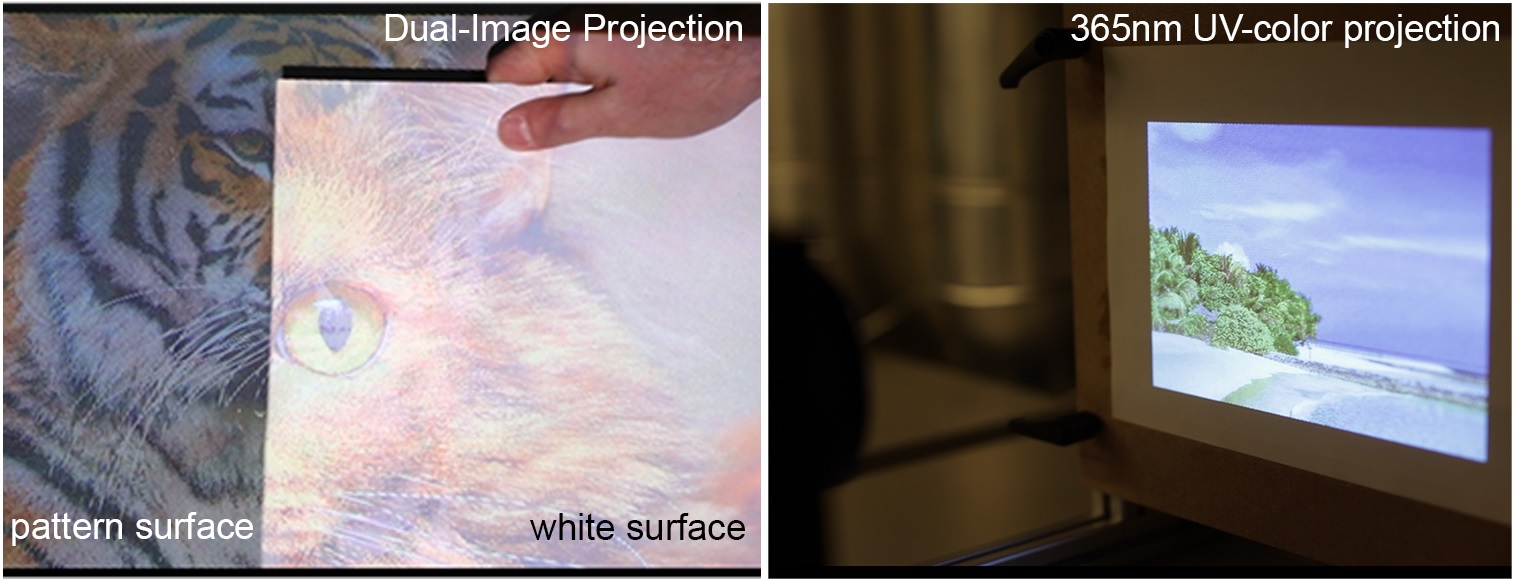Paxel: A Generic Framework to Superimpose High-Frequency Print Patterns using Projected Light
We propose Paxel, a generic framework for modeling the interaction between a projector and a high-frequency pattern surface.
April 6, 2018
IEEE Transactions on Image Processing 2018
Authors
Petar Pjanic (Disney Research)
Anselm Grundhöfer (Disney Research)
Paxel: A Generic Framework to Superimpose High-Frequency Print Patterns using Projected Light
In this paper, we propose Paxel, a generic framework for modeling the interaction between a projector and a high-frequency pattern surface. Using this framework, we present two different application setups (cf. Fig. 1a): a novel color-changing effect, created with a single projected image and only when the projection surface is changed from a pattern surface to a uniform white surface. The observed effect relies on the spatially different reflectance properties of these two surfaces. Using this approach, one can alter color proprieties of the projected image such as hue or chroma. Furthermore, for a specific color range, defined by an full color-changing sub-gamut, one can embed two completely different images, within a single static projection, from which either one will be revealed depending on the surface. The second application allows the creation of color images using a single channel projector. For this application, we present a full color projection created using a 365 nm ultraviolet (UV) projector in combination with fluorescent pigments (cf. Fig. 1b), enabling new display possibilities, such as projection through participating media, e.g. fog, while hiding the scattering of the projection light outside of the visible spectrum. Both presented approaches create effects that might be striking to the observer, making this framework useful for art exhibitions, advertisements, entertainment and visual cryptography. Finally, in Sec. VI, we provide an in-depth analysis of the reproducible colors based on input parameters, used in the presented algorithm, such as: pattern layout, dot size of the pattern and the number of the clusters formed by k-means algorithm (IV-B).

